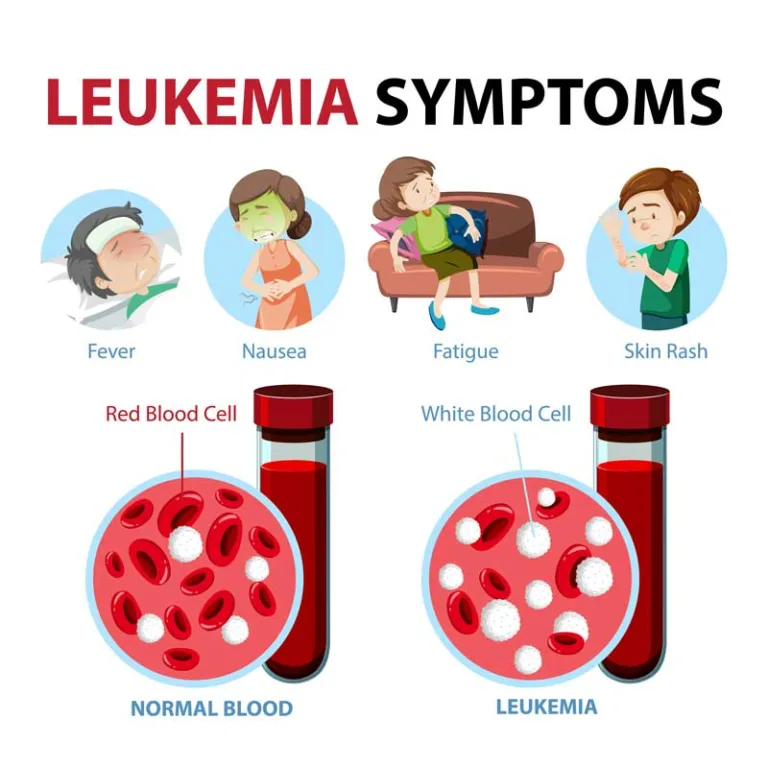Lipomas are benign, non-cancerous growths that develop beneath the skin. Although they are usually harmless, they can be bothersome or unsightly for some individuals. If you are dealing with a lipoma and want to explore natural methods for removal, this article will provide you with comprehensive information on the subject. Before we delve into the remedies, it’s essential to emphasize that medical consultation is always recommended before attempting any DIY treatment. However, if you’ve received the green light from your healthcare professional, let’s explore some effective natural methods to remove lipomas.

How to Identifying Lipoma?
Lipomas can vary in size, ranging from small pea-sized lumps to larger masses. They often feel doughy or rubbery to the touch and are generally painless unless they press on nerves or other structures. In dogs, they are commonly found on the trunk, chest, and legs, while in humans, they can occur anywhere on the body, especially on the arms, neck, and shoulders.
What Causes Lipoma?
Lipomas occur when fat cells grow excessively, forming a lump under the skin. The exact cause of lipomas is not always clear, but they are believed to be influenced by genetic factors. Certain conditions like Gardner syndrome and adiposis dolorosa can also lead to lipoma development. Although they can appear anywhere on the body, lipomas are commonly found on the neck, shoulders, back, and arms.
Natural Methods for Lipoma Removal
Apple Cider Vinegar (ACV)
Apple cider vinegar is a popular natural remedy known for its various health benefits, and it’s also believed to help with lipoma removal. ACV contains acetic acid, which may assist in breaking down fatty tissues.
How to Use:
- A cotton ball should be soaked in unprocessed, raw apple cider vinegar.
- Apply the cotton ball to the lipoma and secure it with a bandage.
- Overnight or for a few hours, leave it on.
- Repeat this process daily until you notice a reduction in size.
Turmeric
Turmeric is widely known for its antioxidant and anti-inflammatory effects. It contains curcumin, which might aid in shrinking lipomas.
How to Use:
- To make a paste, combine water and turmeric powder.
- Apply the paste to the lipoma.
- Put a clean cloth over it and leave it alone for a few hours.
- Rinse off with warm water.
- Perform this treatment regularly for best results.
Chickweed
Chickweed is an herb that has been traditionally used to treat various skin conditions, including lipomas, due to its potential ability to dissolve excess fat.
How to Use:
- Crush fresh chickweed leaves to extract the juice.
- Apply the juice directly to the lipoma.
- Prior to rinsing it off, let it on for a few hours.
- Repeat daily until you observe improvement.
Green Tea Extract
Green tea is rich in antioxidants, particularly catechins, which may help in reducing the size and help to remove natural way to lipoma removal.
How to Use:
- Put a green tea bag in hot water to brew.
- Let it cool down.
- Gently apply the cooled tea bag to the affected area.
- For around 20 minutes, leave it on.
- For best effects, carry out this procedure several times every day.
Aloe Vera
Aloe vera is well known for its sedative and healing properties. While it may not directly reduce lipoma size, it can help keep the skin moisturized and promote overall skin health.
How to Use:
- The leaf can be used to extract fresh aloe vera gel.
- Apply the gel to the lipoma and surrounding area.
- Afterward, wash it off after 30 minutes of letting it sit.
- Use this method regularly to maintain skin health.
Diet and Lifestyle Changes
In addition to trying out natural remedies, making certain dietary and lifestyle adjustments can also play a role in managing lipomas.
Incorporate the following changes into your routine:
- Balanced Diet: Focus on a diet rich in fruits, vegetables, and whole grains while reducing the consumption of processed foods and saturated fats.
- Regular Exercise: Engage in regular physical activity to promote overall well-being and healthy weight management.
- Hydration: Drink plenty of water to keep your body hydrated and support optimal skin health.
- Avoid Tight Clothing: Tight clothing can irritate the lipoma and may hinder blood circulation. Opt for loose-fitting clothes to avoid unnecessary pressure on the affected area.
What are Lipomas in Dogs and Natural Methods for Lipoma Removal?

A lipoma is a non-cancerous growth of fatty tissue that forms just beneath the skin. They typically feel soft and moveable, and they can develop anywhere on your dog’s body. Lipomas are more prevalent in older dogs and certain breeds, such as Labrador Retrievers, Doberman Pinschers, and Miniature Schnauzers.
Identifying Lipomas
It’s crucial to be able to differentiate lipomas from other growths or health issues. Here are some characteristics that can help you identify a lipoma:

1. Texture and Feel
The majority of the time, lipomas feel rubbery and soft to the touch. They can be easily moved around beneath the skin.
2. Size
Lipomas can vary in size, from small pea-sized lumps to larger ones. In most cases, they grow slowly over time.
3. Location
They can appear on any part of your dog’s body. Common locations include the chest, abdomen, legs, and neck.
4. Pain and Discomfort
Lipomas are generally painless. However, if a lipoma grows in a location that puts pressure on nerves or muscles, it might cause discomfort or mobility issues.
Causes of Lipomas
The exact cause of lipomas in dogs is not entirely understood. However, some factors may contribute to their development:
1. Genetics
Certain breeds are more predisposed to developing lipomas, suggesting a genetic link.
2. Age
Lipomas are more commonly observed in older dogs, indicating that age might be a factor.
3. Hormonal Factors
Hormonal imbalances could potentially play a role in lipoma formation.
4. Obesity
Higher weight dogs might have a higher likelihood of developing lipomas.
Natural Methods for Lipoma Removal from Dogs
As a loving dog owner, you may wonder if there are natural ways to address lipomas without resorting to surgery. While it’s essential to consult your veterinarian for proper diagnosis and advice, some natural methods may support your dog’s overall well-being and potentially aid in lipoma reduction:
1. Dietary Adjustments
Maintaining a balanced and healthy diet is crucial for your dog’s overall health. Ensure their food is rich in essential nutrients, and consider adding foods that have anti-inflammatory properties, such as turmeric and fish oil.
2. Regular Exercise
Encouraging your dog to stay active with regular exercise can help manage weight and reduce the risk of lipomas associated with obesity.
3. Herbal Remedies
Certain herbs like burdock root and dandelion have been used traditionally to support liver health, which may indirectly benefit the reduction of lipomas.
4. Massage
Gentle massaging around the lipoma area can stimulate blood circulation and lymphatic drainage, potentially aiding in the natural reduction of the fatty lump.
5. Aloe Vera
Aloe vera gel has anti-inflammatory properties and can be applied topically to soothe the lipoma area.
When to Seek Veterinary Advice
While natural methods can be supportive, it’s crucial to remember that lipomas are not always harmful, and surgical removal is not always necessary. However, consulting your veterinarian is essential for a proper diagnosis and to rule out any potential health risks. Seek veterinary advice if:
1. Rapid Growth
If you notice sudden and rapid growth of the lipoma, it’s important to get it checked.
2. Change in Texture or Appearance
Any changes in the lipoma’s texture, color, or appearance should be examined by a veterinarian.
3. Discomfort or Pain
If your dog shows signs of discomfort, pain, or difficulty moving due to the lipoma, consult a veterinarian promptly.
4. Uncertainty
If you’re unsure about the nature of the lump or have concerns, it’s always best to have it evaluated by a professional.
Conclusion
Lipomas, though usually harmless, can be bothersome for both dogs and humans. Exploring natural methods for removal, such as apple cider vinegar, turmeric, chickweed, and maintaining a healthy lifestyle, can be effective in managing lipomas. However, it is essential to exercise caution and seek professional advice when necessary.
Remember, your furry companion and your health are valuable, and any concerns about lipomas should be addressed promptly by a qualified veterinarian or healthcare professional. By following a healthy lifestyle and staying vigilant about any changes in your pet’s or your body, you can promote overall well-being and take control of your health.
So, embrace the power of nature, adopt a healthy lifestyle, and remember to give your dog or yourself the attention and care needed for a happy and lipoma-free life! Stay proactive, stay healthy, and cherish the bond you share with your furry friend on this journey called life.
Frequently asked questions
What are lipomas, and can they be removed naturally?
Lipomas are benign growths formed by excess fat cells under the skin. Yes, lipomas can be removed naturally using safe and effective DIY methods.
What are some natural methods for lipoma removal?
Some natural methods for lipoma removal include using apple cider vinegar, turmeric paste, chickweed treatment, green tea extract, aloe vera gel, and incorporating diet and lifestyle changes.
Can I use apple cider vinegar to remove lipomas?
Yes, apple cider vinegar contains acetic acid, which may help break down fatty tissues and aid in lipoma reduction.
How do I apply apple cider vinegar for lipoma removal?
Soak a cotton ball in raw, unfiltered apple cider vinegar and apply it to the lipoma. Secure it with a bandage and leave it on for a few hours or overnight. Repeat daily for best results.
Is turmeric paste effective for lipoma removal?
Turmeric paste, rich in anti-inflammatory curcumin, may aid in shrinking lipomas and is considered effective for some individuals.
How do I make turmeric paste for lipoma removal?
Mix turmeric powder with water to form a paste. Apply the paste to the lipoma, cover with a clean cloth, let it sit for a few hours, and rinse off with warm water. Use it regularly for optimal results.
Can chickweed treatment help with lipoma removal?
Chickweed, known for its fat-dissolving properties, has been traditionally used for various skin conditions, including lipomas.
How do I use chickweed treatment for lipoma removal?
Crush fresh chickweed leaves to extract the juice and apply it directly to the lipoma. Leave it on for a few hours before rinsing it off. Repeat daily for improvement.
Is green tea extract beneficial for reducing lipomas?
Yes, green tea contains catechins, which are antioxidants that may help reduce the size of lipomas.
How do I apply green tea extract for lipoma removal?
Steep a green tea bag in hot water, let it cool down, and gently apply the cooled tea bag to the affected area. Repeat multiple times daily for best results.
Can aloe vera gel help with lipoma removal?
Aloe vera gel is known for its healing properties and can promote overall skin health, but it may not directly reduce lipoma size.
What dietary and lifestyle changes can help manage lipomas?
A balanced diet rich in fruits, vegetables, and whole grains, while reducing processed foods and saturated fats, may be beneficial. Regular exercise, proper hydration, and avoiding tight clothing are also recommended.
Are lipomas dangerous, and do they require medical attention?
Lipomas are generally benign and harmless. However, it’s essential to seek medical attention for proper diagnosis and evaluation. In some cases, surgical removal may be recommended for larger or bothersome lipomas.
Is it safe to remove lipomas at home using natural remedies?
Attempting to remove lipomas at home should be done with caution. Natural remedies may help with reduction, but their effectiveness can vary. Always prioritize safety and consult a healthcare professional before any DIY treatment.
Can lipomas recur after removal?
Yes, there is a possibility of lipomas recurring after removal, especially if the underlying cause is not addressed. Regular monitoring and follow-up with a healthcare professional are crucial to track any changes.
What are the signs of infection in a lipoma?
Signs of infection in a lipoma may include redness, increased pain, warmth around the area, and the presence of pus or discharge. If you suspect an infection, seek medical attention promptly.
Can lipomas be cancerous or turn into cancer?
Lipomas are non-cancerous growths. They do not pose a risk of turning into cancer. However, it’s essential to differentiate them from other conditions that might require further evaluation.
Are lipomas more common in specific age groups?
Lipomas can occur at any age, but they are more common in adults aged 40 to 60. However, they can also develop in children and adolescents.
Can lipomas be painful?
Lipomas are typically painless; however, they may cause discomfort if they press on nerves or sensitive areas. If you experience pain, it’s essential to have the lipoma evaluated by a healthcare professional.
Are lipomas common in dogs?
Yes, lipomas are relatively common in dogs, especially in certain breeds. However, it’s essential to have any lump or growth on your pet examined by a veterinarian for accurate diagnosis.
Can lipomas in dogs be treated with natural remedies?
While natural remedies may help reduce the size of lipomas in dogs, it’s crucial to consult a veterinarian before attempting any treatments. Professional guidance ensures the safety and well-being of your furry companion.
Can lipomas be painful in dogs?
Lipomas in dogs are usually painless. However, if a lipoma grows too large or presses on nearby tissues, it may cause discomfort. Observe your pet’s behavior and seek veterinary advice if there are any signs of pain.
What should I do if I notice a new lipoma on my dog?
If you notice a new lipoma on your dog, have it examined by a veterinarian for proper diagnosis and monitoring. They can determine whether it requires treatment or observation.
Are there any breeds more susceptible to lipoma development in dogs?
Certain dog breeds, such as Labrador Retrievers, Golden Retrievers, and Doberman Pinschers, are more prone to developing lipomas. Regular health check-ups and monitoring are crucial for early detection.
Can lipomas cause mobility issues in dogs?
In most cases, lipomas do not cause mobility issues in dogs. However, if a lipoma grows large enough to impede movement or cause discomfort, consult a veterinarian for appropriate management.
Are lipomas contagious between dogs and humans?
No, lipomas are not contagious between dogs and humans. They are non-cancerous growths that do not spread through contact.






